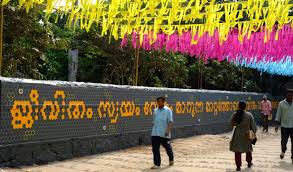
In the vibrant art scenes of South Asia, a quiet revolution is taking place — minimalism. Departing from ornate traditions, many artists are embracing clean lines, negative space, and subtle symbolism to express complex ideas.
This isn’t Western minimalism transplanted; it has deep local roots. From Jain geometric patterns to Zen-like compositions in ancient Indian art, simplicity has always had a place. Today’s creators reinterpret these traditions with contemporary materials and digital tools.
South Asian minimalists often explore themes like identity, silence, memory, and urban alienation. They use restrained palettes, delicate textures, and symbolic objects to evoke emotion. A single line, a muted tone, or a blank canvas speaks volumes.
What makes this movement stand out is its meditative quality. In a region known for visual intensity, minimalism offers pause and contemplation. It’s not about absence but essence — distilling meaning to its purest form.
Galleries, especially in cities like Bengaluru, Lahore, and Colombo, are beginning to showcase this aesthetic shift. The trend also resonates online, where minimalist art fits perfectly into the visual language of digital platforms.
South Asian minimalism is not loud—but its silence is powerful.